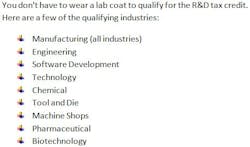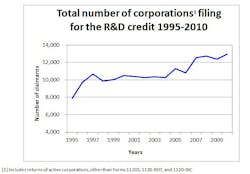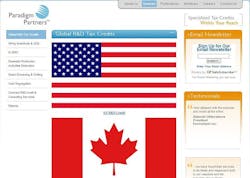R&D credit open to more companies thanks to modified IRS regulations
By Jim Foster, J.D.
On 3 June 2014, the United States (U.S.) Treasury Department and Internal Revenue Service (IRS) published a policy change that will benefit research and development businesses to the tune of millions of dollars through the promulgation of temporary regulation TD 9666.
In this policy memorandum, the IRS addressed an issue that has hindered the ability of businesses to claim the R&D tax credit on amended returns since the introduction of the Alternative Simplified Credit (ASC) in 2007.
Two calculation methods are available for businesses that are able to qualify for the federal research and development tax credit, each of which require the determination of a baseline to which the current year’s research and development expenditures are compared. On timely filed returns, businesses have the option to choose among these two credit calculations and use the calculation that yields the best result. However, many other businesses have limited options or can only benefit from a credit calculated using a particular method.
The IRS has previously only allowed the Regular credit to be utilized on an amended return if the taxpayer had never filed for the R&D credit before. While this regular method can be useful in some instances, its calculations can be extremely burdensome, in some cases requiring the taxpayer to provide information about its research and development activities from three decades ago, which, even if the company happened to exist at that time, is a major hurdle.
The other method – the ASC – is a much simpler option than calculating a base percentage using the Regular credit calculation methods and frequently yields a larger credit. However, the inability of businesses to take ASC on amended returns has, to an extent, diminished the effectiveness of the R&D credit. For example, many companies conduct research and development for many years before trying to claim the R&D credit, and are dismayed to learn that they cannot amend their returns for previous years using the ASC method. Other companies may decide not to take a credit because they believe they will not have taxable income for several years, but then outperform expectations and are left with a large tax bill.
The impact of this new regulation is immediate. Many companies who have decided not to take the R&D tax credit in past years will now be able to amend their returns to claim those credits, which, with the benefit of hindsight, they realize will be able to reduce their taxable income. This will result in a boon for businesses nationwide engaged in research and development.
For more information
Visit Paradigm Partners of Houston, Texas, online at www.ParadigmLP.com.





